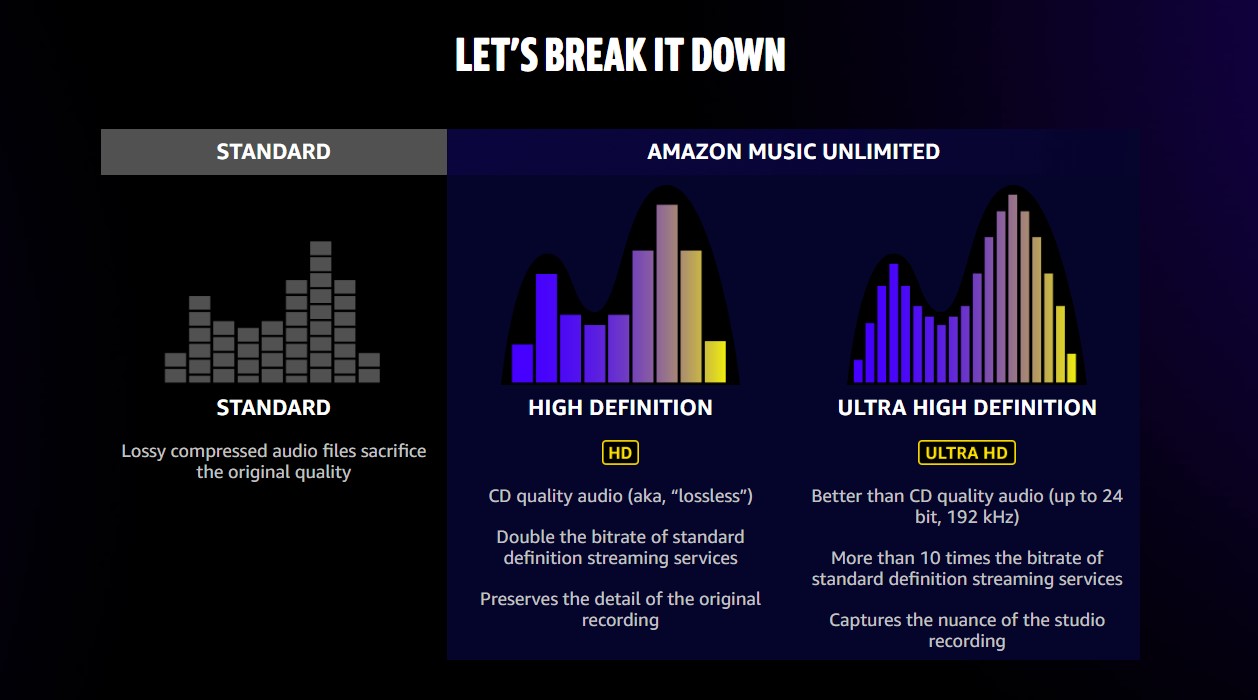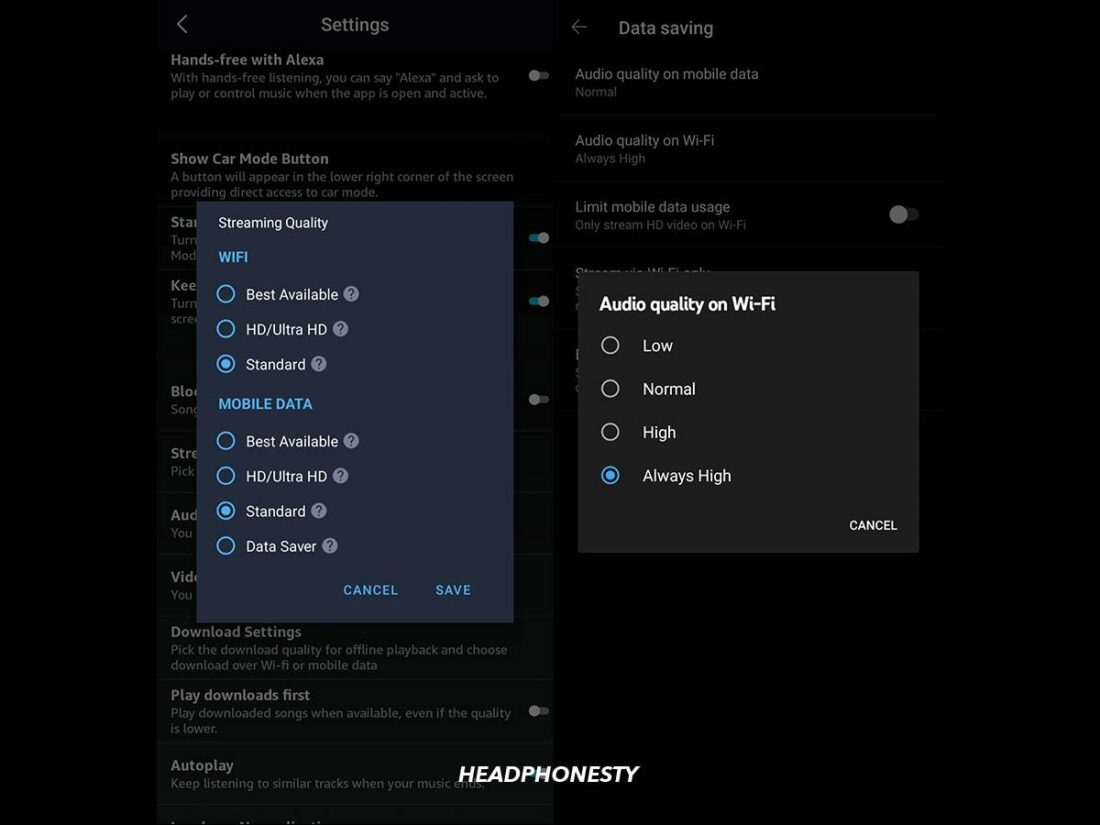When it comes to music and audio-sharing platforms, SoundCloud and YouTube stand out as frontrunners, each offering unique features that cater to different audiences. Whether you're an aspiring artist looking to share your latest track or a casual listener hunting for the best sound quality, you might find yourself wondering which platform reigns supreme when it comes to audio quality. In this comparison, we’ll dive into the nuances of both platforms, exploring the strengths and weaknesses of SoundCloud and YouTube in terms of audio quality, user experience, and overall offerings.
Overview of Streaming Platforms

Both SoundCloud and YouTube boast massive user bases and have become go-to destinations for music enthusiasts, but they each take a distinct approach to audio and video content.
SoundCloud is primarily designed for audio sharing, focusing on music, podcasts, and user-generated audio content. It allows artists to upload tracks, remixes, and even entire albums directly to the platform. The user-friendly interface is tailored for audio discovery, enabling listeners to explore a variety of genres and emerging artists. SoundCloud offers:
- Quality Options: Users can upload tracks at various bitrates, with high-quality options available for premium subscribers.
- User Interaction: It's easy to comment timestamp-specific on tracks, fostering a community around audio.
- Independent Artists: Many creators gravitate toward SoundCloud for its support of indie artists, allowing them to reach audiences without gatekeeping.
YouTube, on the other hand, is primarily a video-sharing platform but has a significant amount of music content. This includes official music videos, live performances, and user-generated content. While many people use YouTube for its extensive video library, it's not primarily optimized for audio. Key aspects include:
- Visual Component: Videos are a core feature, with many users drawn in by the combination of sound and visuals, although audio can sometimes be compromised.
- Accessibility: Nearly anyone can find various content, from mainstream music to niche genres, making it a vast auditory landscape.
- Quality Control: YouTube compresses audio to manage bandwidth, which can affect the overall audio quality compared to dedicated audio platforms.
In summary, while both platforms offer valuable content, their focus diverges significantly, impacting the overall audio quality they deliver to users. Understanding the differences can help you choose the right platform depending on your needs.
Also Read This: Is the Greatest Royal Rumble Available for Streaming on Peacock?
Audio Quality Assessment Criteria

When diving into the world of audio quality, especially between platforms like SoundCloud and YouTube, it’s crucial to have a clear set of criteria to evaluate what makes one sound better than the other. Here’s what you should consider:
- Bitrate: This refers to the number of bits that are processed per unit of time. Higher bitrates often mean better quality audio. SoundCloud offers variable bitrates, while YouTube compresses audio to fit its streaming model.
- Audio Codec: The codec determines how the audio is processed and streamed. SoundCloud primarily uses the MP3 format, which can lead to loss in quality compared to YouTube’s AAC codec, which maintains higher fidelity at lower bitrates.
- Frequency Range: The frequency range refers to the range of tones that can be heard in a sound. A wider frequency range allows for richer audio, capturing the nuances of instruments and vocals. It’s essential to check the specifications each platform offers.
- Dynamic Range: This is the difference between the softest and loudest sounds in a track. A greater dynamic range results in a more immersive listening experience, as it can convey more emotional depth and detail.
- Surround Sound Capability: Some platforms allow for surround sound audio, providing a more engaging experience. While not common for all content, it’s worth checking if the platform supports this feature for certain tracks.
By considering these factors, you can make a more informed decision on which platform delivers the audio quality that suits your needs.
Also Read This: African American Poverty in the USA Through Powerful Images
SoundCloud Audio Quality Features

SoundCloud has carved out a niche for itself in the music streaming realm, particularly for independent artists and audio creators. Let's take a closer look at its audio quality features:
- Variable Bitrate (VBR): SoundCloud employs VBR, which adjusts the bitrate depending on the complexity of the track. This means you'll often enjoy clearer sounds in less complex sections while still saving bandwidth during quieter moments.
- Up to 320 kbps Streaming: SoundCloud allows for streaming at a maximum quality of 320 kbps for pro users, making it one of the platforms that support higher audio qualities. This is particularly beneficial for audiophiles who seek a rich, full sound.
- Support for High-Quality Formats: Besides standard formats like MP3, SoundCloud offers uploads in formats like WAV and FLAC, which preserve audio quality better than compressed formats.
- Real-Time Analytics: SoundCloud provides artists with analytics on their audio tracks, letting them know how listeners are engaging with their work, helping them understand which aspects of their audio quality resonate most with their audience.
- Community Feedback: The platform fosters a community where listeners often engage via comments. This feedback can help creators fine-tune their audio quality in future uploads.
In essence, SoundCloud’s audio quality features are designed to benefit both creators and listeners, allowing for an immersive experience that can rival larger streaming services.
Also Read This: The Best Cities for Tech Employment Opportunities in the USA
YouTube Audio Quality Features
YouTube is globally recognized as the go-to platform for video content, but did you know it also provides some impressive audio quality features? Let’s dig into what makes YouTube a formidable choice for audio enthusiasts.
First and foremost, YouTube offers audio streams at varying bit rates, which affects sound clarity. Here’s a breakdown:
- Standard Quality: YouTube typically streams audio at 128 kbps for standard videos. This is decent for casual listeners.
- High Quality: For select videos, especially music videos, you can enjoy audio at a higher bitrate of up to 256 kbps. This is a noticeable upgrade and better suited for audiophiles.
- Premium Audio Quality: YouTube Music Premium takes it a step further, offering lossless streaming. This means you're getting the full audio experience without any compression artifacts.
Another intriguing feature is the YouTube Audio Library, which allows creators to source high-quality music and sound effects for their videos. This library is packed with royalty-free tracks that can elevate production value without costing a dime!
Additionally, YouTube supports stereo audio, ensuring that listeners experience a more immersive soundstage. This means that not only do you hear the music clearly, but you also experience depth, enhancing the overall listening experience.
Lastly, YouTube utilizes adaptive bitrate streaming. What does this mean for users? As your internet connection fluctuates, YouTube adjusts the audio quality automatically, keeping interruptions to a minimum. Pretty neat, right?
Also Read This: Why Can’t I Watch Rudolph on YouTube TV
Head-to-Head Comparison
Alright, it’s time for the face-off: SoundCloud vs. YouTube in the realm of audio quality. Both platforms have their unique attributes, but how do they stack up against each other? Let’s break it down.
| Feature | SoundCloud | YouTube |
|---|---|---|
| Audio Bitrate | Up to 320 kbps (Pro users) | Up to 256 kbps (Premium features available) |
| Music Selection | User-uploaded tracks and mixes | Music videos and user-generated content |
| Audio Library | Limited | Extensive royalty-free library available |
| Adaptive Streaming | No | Yes |
| Additional Features | Custom playlists and sharing | Video content, visuals, comments, and likes |
When it comes to audio bitrate, SoundCloud takes the lead with its maximum of 320 kbps for Pro users, ideal for those craving top-tier sound. However, YouTube isn’t too far behind with its 256 kbps for music videos and higher-quality streams for Premium users.
In terms of content, SoundCloud leans heavily towards music and audio tracks, while YouTube diversifies with videos, including tutorials and vlogs, giving it an edge in audio-visual experiences.
SoundCloud offers a more tailored experience for new sounds, whereas YouTube provides more in terms of accessibility, adaptive streaming, and a broader audience engagement. Ultimately, your choice between the two might depend on whether you're seeking pure audio exploration or a mixed media experience.
Also Read This: Understanding the Restrictions on Bluetooth Keyboards for YouTube on Smart TVs
User Experience and Preferences
When it comes to choosing between SoundCloud and YouTube, user experience plays a crucial role. Both platforms cater to different audiences, which influences their overall usability and interface. Let's break down what each platform offers and how it impacts user preferences.
SoundCloud is primarily designed for audio content. Users can easily navigate through playlists, albums, and individual tracks. The straightforward interface allows listeners to quickly find new music or dig up hidden gems. Key features that enhance the user experience include:
- Up-and-coming Artist Support: SoundCloud is known for promoting independent artists, making it a go-to for music discovery.
- Commenting System: Users can leave comments on specific parts of a track, fostering engagement and discussion among artists and fans.
- Playlist Creation: Customized playlists enhance user enjoyment, allowing users to curate their own listening experiences.
YouTube, on the other hand, is a video-focused platform, but it has a robust music library as well. The experience is enriched with:
- Visual Content: Many users appreciate the combination of audio and visuals, especially for music videos and live performances.
- Comprehensive Search and Recommendations: YouTube's algorithm suggests music based on user behavior, providing a personalized experience.
- Community Interaction: Users can engage with artists and other fans through comments, likes, and shares.
Ultimately, the choice between SoundCloud and YouTube boils down to what the user values more—audio-centric experiences or a blend of audio and visual content.
Conclusion and Recommendations
Deciding between SoundCloud and YouTube really hinges on your personal preferences and intended use. Both platforms have their unique strengths that cater to different types of listeners and content creators.
If you're an avid music lover who prioritizes discovering new, independent artists, SoundCloud is the ideal choice. Its exclusive content and community-driven approach foster a rich environment for emerging talent:
- Explore tracks from diverse genres.
- Engage directly with artists.
- Create and share playlists easily.
On the other hand, if you enjoy a blend of music and visuals—especially music videos or performances—YouTube offers a more comprehensive experience. With its massive library and algorithm-driven recommendations, you can:
- Access millions of tracks and videos in one place.
- Enjoy high-quality sound mixed with visual storytelling.
- Participate in a larger community of fans.
In conclusion, if you're primarily seeking audio quality with a focus on new artists, go for SoundCloud. If you prefer a more extensive visual and interactive platform, then YouTube should be your pick. Consider trying both platforms to see which aligns with your listening habits!
 admin
admin








